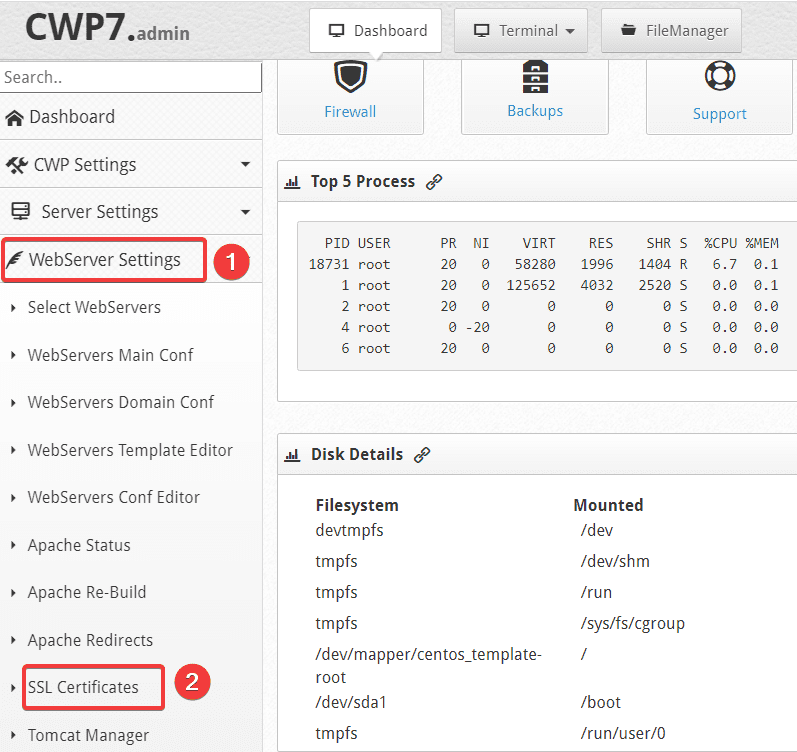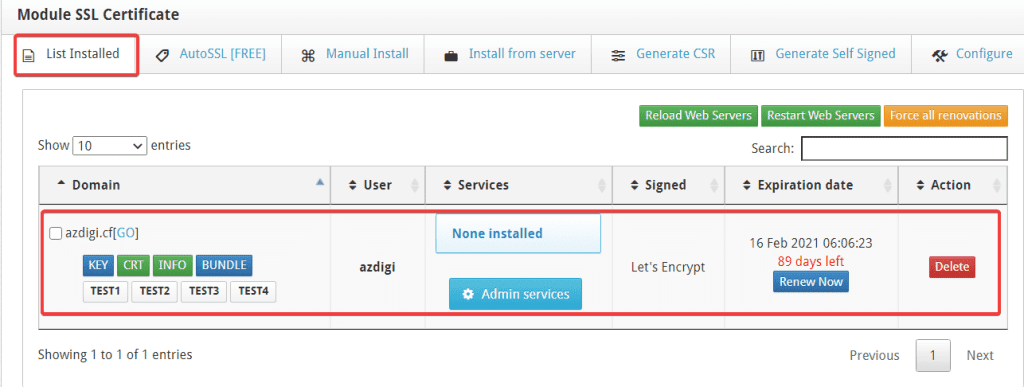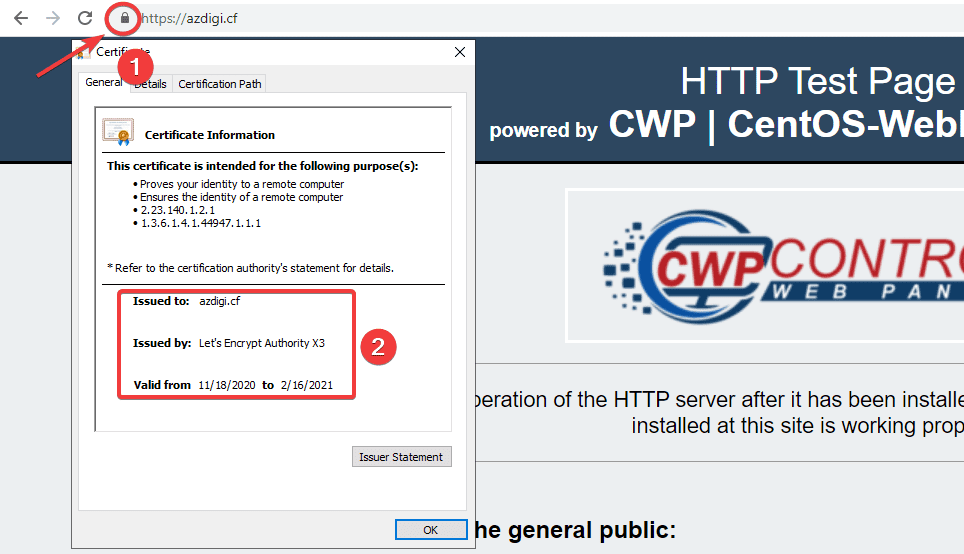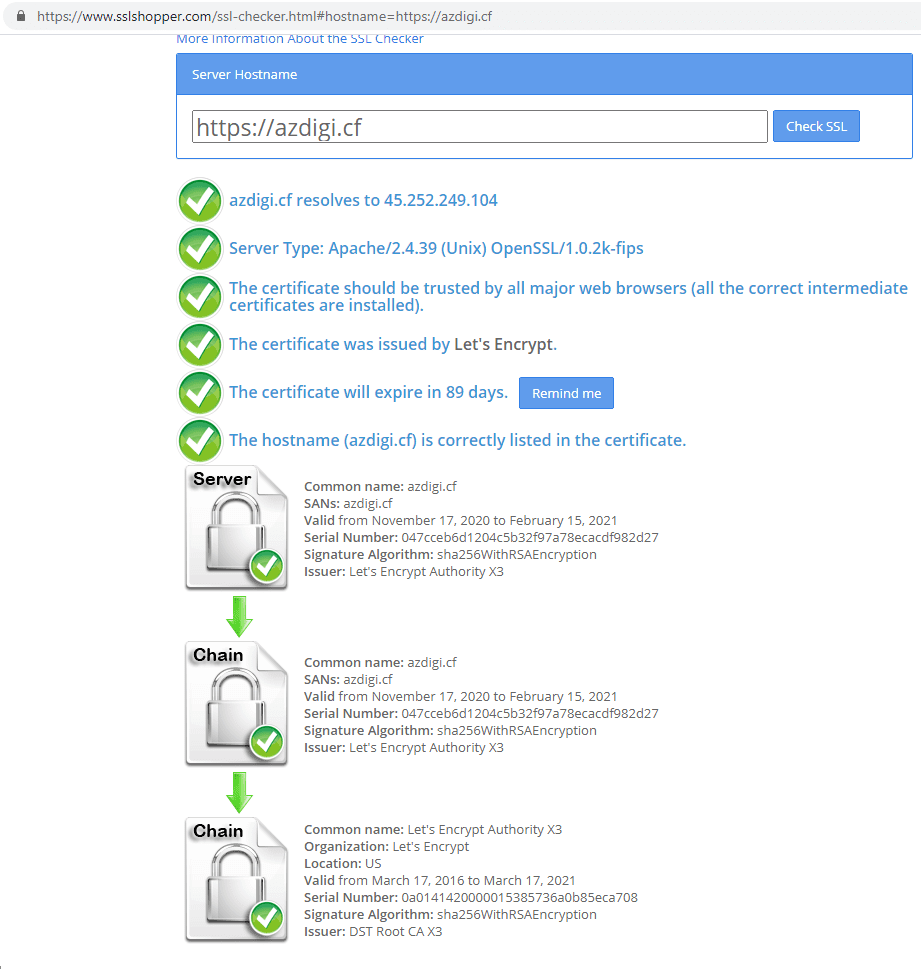Nội dung
How to install Let’s Encrypt SSL on Centos Web Panel (CWP)
In this article, AZDIGI will guide you on installing Let’s Encrypt SSL certificate on your website using Centos Web Panel (CWP) control in the simplest and fastest way, please follow along.
I. Overview
What is an SSL certificate?
SSL is a certificate that helps encrypt information on devices or applications that support this encryption. SSL certificate will have Private Key and Public Key, in which Public Key will be installed in terminal applications that browsers or other applications can access. Private Key will be installed in applications that handle receiving data.
Its purpose of operation is like the key to helping decrypt the data sent from the terminal, which is also encrypted through the Public Key.
What is Let’s Encrypt?
Let’s Encrypt is an SSL authentication organization like Comodo, GeoTrust and Symantec, but the difference is that they are a non-profit organization established with the auspices of influential organizations in the world Cisco, Akamai, Mozilla, Facebook… Therefore, Let’s Encrypt SSL certificates will be no different from other types of SSL certificates. However, you must renew them every 90 days to continue using them.
So to install Let’s Encrypt SSL on a website using CWP, please see the steps below.
II. Implementation Guide
In this SSL installation, you can install it through both the root user and the child user. Because the root user will be the user with the highest privileges in VPS, it can perform direct operations on child users. I will give specific instructions to both users.
Step 1: Install Let’s Encrypt
Root user
To access the root user interface, follow the link: https://45.252.249.104:2087/ (remember to change your IP) and use the VPS root information to log in.
At the Root admin interface, you access WebServer Settings => SSL Certificates.

At the next interface, you select Auto SSL [FREE] (1) => User (2) (select User containing the domain to be installed) => Domain (3) (select the domain to install). After selecting all the information, click Install SSL to perform the installation.
Note: For the boxes mail, webmail, ftp, cpanel, these are the subdomains of the main domain, if you want to install SSL for any subdomain, then tick the corresponding box. However, these subdomains must be pointed to the VPS IP to be installed..

After the installation is complete, click the List Installed tab to view the certificate just installed.

Child user
To access Child User’s interface, follow the link: https://45.252.249.104:2083/ (remember to change your IP) and use your user information to log in.
At the User interface, you access Domains => AutoSSL => Domain/Subdomain (choose the right domain to install). After selecting, click Install to perform the installation.
Note: For the boxes mail, webmail, ftp, cpanel, these are the subdomains of the main domain, if you want to install SSL for any subdomain, then tick the corresponding box. However, these subdomains must be pointed to the VPS IP to be installed..

After successful installation, you will get certificate information as shown below:

So the installation of SSL is complete for both users.
Step 2: Check the certificate after installation
To more accurately check if your website has successfully installed SSL, you can check more through the 2 methods below.
Method 1: Check from the browser
You can access your website in a browser and click on the padlock icon as shown below to check. It will display which company’s certificate the website uses and specify the issue date and expiration date.

Method 2: Check from SSL Shopper page
You can access the SSL Checker page by following the link: https://www.sslshopper.com/ssl-checker.html
Then you enter your domain and click Check SSL. At this point, all information about the website’s certificate will be fully displayed as below:

III. Summary
So in this article, AZDIGI showed you how to install SSL Let’s Encrypt on a website using CWP completed with just a few mouse clicks. Installing this seemingly simple SSL helps a lot for your website in terms of security as well as good for SEO. Hopefully, this article will help you to install Let’s Encrypt SSL successfully!
If you find the article helpful, please share it widely. You can refer to other articles about CWP at the link below:
If you need assistance, you can contact support in the ways below:
- Hotline 247: 028 888 24768 (Ext 0)
- Ticket/Email: You use the email to register for the service and send it directly to: support@azdigi.com

